by Keri Mangis: Use yin yoga to target the channels of energy that fear, anxiety, and confusion flow through. Then release these emotions…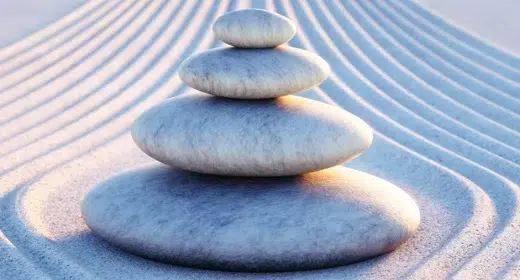
In Traditional Chinese Medicine (TCM), 12 principal meridians (or nadis in Sanskrit) extend throughout the body, each running through and named for a different organ—the kidney meridian, liver meridian, heart meridian, and so forth. These meridians are the channels or pathways through which chi flows in the body.
It is also understood in TCM that our organs are the holding places for emotions we’ve not yet addressed or released. The kidneys hold fear; the liver holds anger; the heart contains grief; and so on. Thus, when diseases or imbalances arise in those organs, it is important to consider the related emotion as well.
Fear, Yin Yoga, and Traditional Chinese Medicine
Yin yoga was built on an understanding of TCM principles, making it an ideal practice to simultaneously increase the quality of the chi flowing through the meridians and enhance our emotional wellbeing.
These postures address the emotion of fear and all of its close cousins: apprehension, confusion, anxiety, and uncertainty. These emotions connect to the kidneys, so these postures will primarily stretch the inner thighs and lower back regions through which the kidney and bladder meridians run (kidney and bladder are a yin/yang pair).
Three Yin Yoga Postures for Fear, Anxiety, and Confusion
The trinity of postures outlined here will help:
- Promote a calmer mind
- Stimulate your parasympathetic nervous system
- Nourish the adrenal glands that sit atop the kidneys
1. Wide-Kneed Child’s Pose
Move into this pose from a traditional Child’s pose (knees together, chest on the knees, head or hands on the ground). Slowly begin to separate the knees while keeping the big toes touching until you feel gentle tugging in the inner thighs. Support yourself on your hands, forearms, or belly, whichever is most comfortable. Find a place where you can work; some discomfort is okay but not so much that you can’t stay present with your breath.
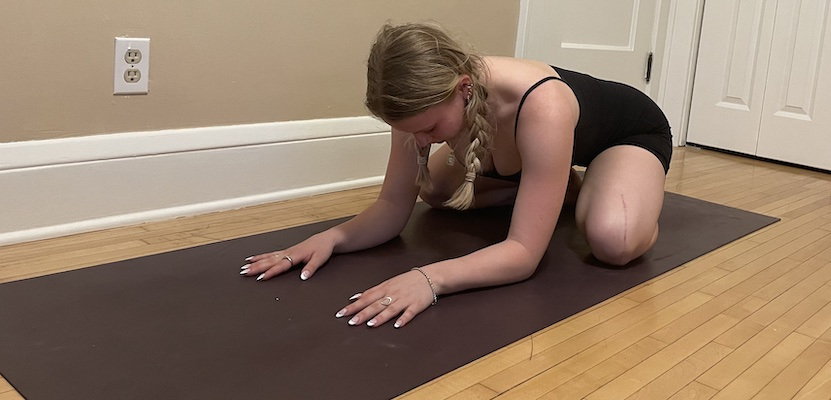
Stay and breathe for three to five minutes. When you’re ready to move out, come back onto your hands and slowly bring one knee in and then the other until you’re back in a traditional Child’s pose. Breathe here for another minute.
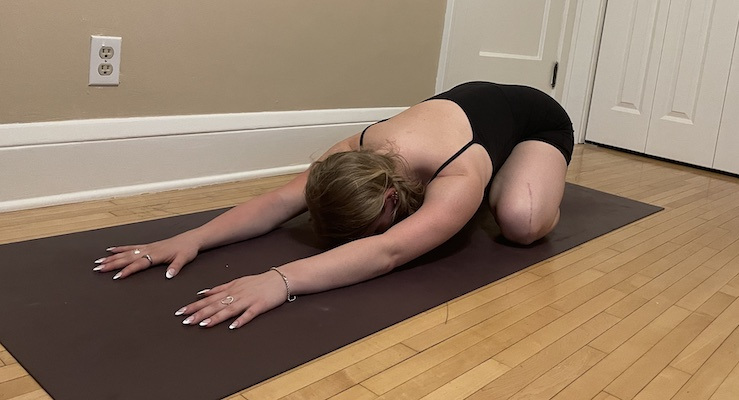
2. Sphinx or Seal Pose
Slide down onto your belly. Bring your feet about hip-width’s distance apart. Do not engage the leg or glute muscles like you would for a traditional Cobra pose in a yang-style practice. Slowly come up onto your elbows, either to a 90-degree angle with your shoulders, or extend your arms out as far as you need to so that you feel comfortable and are able to stay.
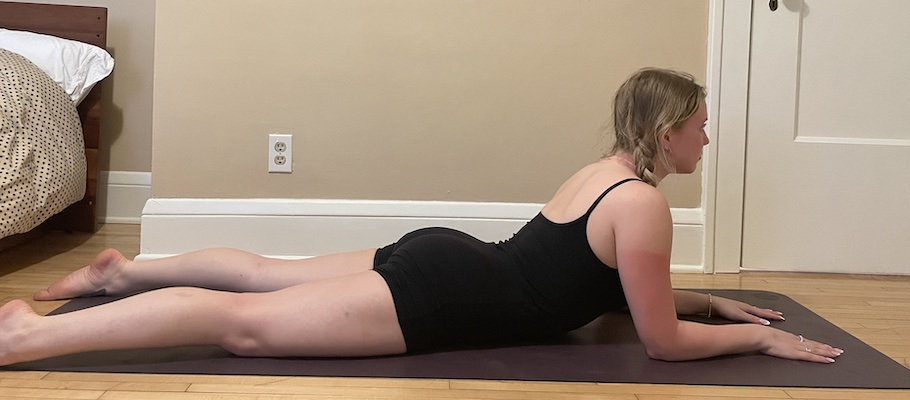
If you are comfortable here, you may come up all the way up on your hands into Seal pose. You may feel some heat and gentle compression in the low spine. If you feel anything sharp or pinching, adjust down until you feel more comfortable.
Stay and breathe for three to five minutes. When the time is up, use an exhale to lower yourself to the ground slowly. Remain in a prone position for a minute or so, and then, when you’re ready, use an inhale to push up to all fours. Gently reach back to a Child’s pose for another minute.
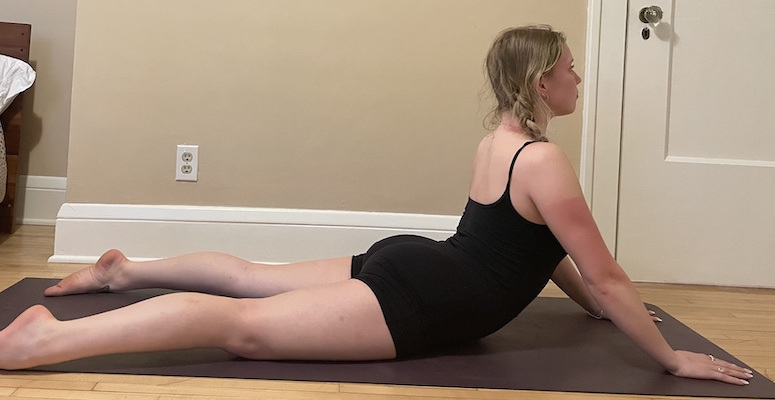
Caution: If you are managing back pain, try the following adjustments:
- Keep the legs and glutes engaged, rather than letting them relax. This will help protect the lower back.
- Rotate your pelvis forward, so the pubic bone presses into the mat/floor and the sacrum flattens. This will also help protect the lower back.
If these modifications do not alleviate the pain, work with the other postures instead. They all work with the same emotions.
3. Caterpillar Pose
The third posture in this trilogy will also target the lower back, but from a forward fold rather than a backward bend.
Begin by sitting on the floor with your legs extended in front of you. You may sit on the edge of a folded blanket or medication cushion if that helps you sit more comfortably.
From here, fold forward softly over the legs. Do not engage your thighs, and, if comfortable, let the feet fall open. Let gravity do the work in this posture as you breathe, and bring your awareness into your back where the energy is collecting. Stay for three to five minutes.
To exit this pose, use an inhale to lift yourself back up. End this sequence with Savasana, anywhere from five to 15 minutes in length, to let your body integrate the changes.
For more on fear, consider Rumi’s advice: Don’t move the way fear makes you move.

Additional Tips and Reminders for Practicing Yin Yoga
- A yin yoga practice does not need to be long to be effective; three to five postures, held for three to five minutes, can be a wonderfully nourishing practice.
- Unlike when doing yang style practices, try to relax the muscles around the stretch (unless you have pain or injury, in which case, engage the muscles surrounding the area, and practice cautiously).
- Stillness and silence are trademarks of this practice. Once settled in a posture, try to become very still.
- Let yourself feel your emotions. This practice almost assuredly will cause emotions to rise, either directly or through a sense of discomfort or dis-ease somewhere in the body or mind. Stay with them until they move on, like clouds passing in the sky.
- Stay mindful and present with your thoughts. Try not to let yourself slip into daydreaming or planning the rest of your day.
- Discomfort is okay and welcomed; pain is not. Practice discernment and communicate with your body to know what is right and what needs modification.
- The rest between poses is just as important as the poses themselves. This is when all the energy that was collected and stimulated floods the whole channel, top to bottom.
- Move in and out of the postures slowly, using your breath. This is especially important after holding still for several minutes.









































